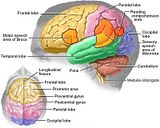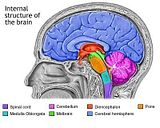Currently, scientists do not know what causes the majority of brain cancers. There may be a slight genetic predisposition, as family members of astrocytoma patients have a slightly increased incidence of the disease.
Clinical studies show that a large number of genetic alterations take place in the higher grade astrocytomas; although this helps to explain what is going wrong in the cells, it does not explain what is causing these genetic mutations to take place.
While it is known that ionizing radiation can cause brain tumors, most people are not exposed to this type of radiation unless they are being treated for cancer. Ongoing studies are examining the long-term risks of other types of radiation, but as of 2001, neither x rays, electromagnetic fields, or cellular phones appear to increase the likelihood of brain cancers. Although evidence is not yet conclusive, some studies suggest that some brain tumors may be caused by environmental exposure to certain organic chemicals.
Exposure is most harmful to the developing fetus and infants, so pregnant women may wish to consider whether they have any occupational exposure to organic chemicals. Parents of infants should be aware of pesticides and any other potentially harmful chemical their child could come into contact with.
Additionally there is some evidence that supplements containing vitamins A, C, E, and folate may have a protective effect when taken during pregnancy. The children of women who take these supplements during pregnancy are half as likely to develop brain tumors before age five.
Clinical studies show that a large number of genetic alterations take place in the higher grade astrocytomas; although this helps to explain what is going wrong in the cells, it does not explain what is causing these genetic mutations to take place.
While it is known that ionizing radiation can cause brain tumors, most people are not exposed to this type of radiation unless they are being treated for cancer. Ongoing studies are examining the long-term risks of other types of radiation, but as of 2001, neither x rays, electromagnetic fields, or cellular phones appear to increase the likelihood of brain cancers. Although evidence is not yet conclusive, some studies suggest that some brain tumors may be caused by environmental exposure to certain organic chemicals.
Exposure is most harmful to the developing fetus and infants, so pregnant women may wish to consider whether they have any occupational exposure to organic chemicals. Parents of infants should be aware of pesticides and any other potentially harmful chemical their child could come into contact with.
Additionally there is some evidence that supplements containing vitamins A, C, E, and folate may have a protective effect when taken during pregnancy. The children of women who take these supplements during pregnancy are half as likely to develop brain tumors before age five.








0 comments:
Post a Comment